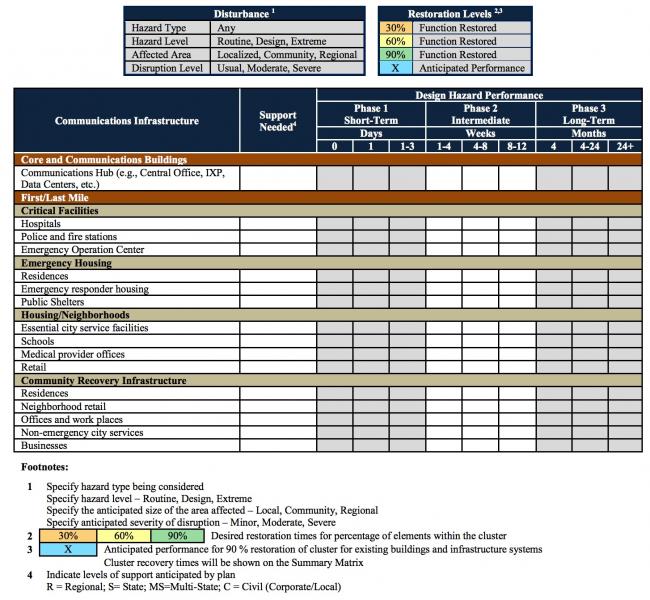Communications
Communication systems are integral to how our society functions, including broad reliance on mobile devices and the internet. The resilience of communications systems is one of the most critical aspects of community resilience, as nearly all other forms of infrastructure are dependent on clear and reliable communications.
Communication systems play a critical role during and after a hazard event. People rely on landline telephones, cellular or mobile systems, internet access, and cable and broadcast television to monitor the situation and to contact family members, schools, employers, and emergency responders. In addition, government and other public agencies disseminate information to the public through one-way communication systems. Informal networks that reinforce the capacity of communities to respond to extreme events are also reliant on communication systems to mobilize and to respond.
Unfortunately, communications systems have failed in multiple ways as a result of hazard events. Physical damage to communications infrastructure and critical equipment can also lead failure of dependent energy, water, and transportation systems. And in the aftermath of hazard events, service disruptions can occur when user demand exceeds the capacity of the system.
To identify the level of communications performance and resilience a community needs, stakeholders—including service providers, critical facilities representatives, local businesses, and representatives of interdependent infrastructure systems—can form a team to explore their needs, threats, and potential mitigation strategies.
Communications time horizons
A community that has experienced a hazard has short (0–3 days), intermediate (1–12 weeks), and long-term (4–36+ months) recovery needs. Specific to communication systems, communities traditionally focus on short-term recovery needs that facilitate emergency response and management goals. These include:
- Relaying emergency and safety information to the public.
- Coordinating recovery plans among first responders and community leaders.
- Communication between civilians and emergency responders via 9-1-1.
- Communication between family members and loved ones to check on each other‘s safety.
- Continued operation of informal and private networks that support community recovery.
When addressing resilience to help a community prepare for the next hazard event, longer-term communications infrastructure needs include:
- The ability to communicate with employers, schools, and other aspects of individuals’ daily lives,
- Re-establishing data and voice communication operations of businesses, banks, and government services to resume commerce, and
- Restoring, retrofitting, and improving infrastructure components to avoid failing in the same way during future events.
Measuring communications performance
Performance in communications systems is measured by the following variables:
Availability refers to the percentage of time a communications system is accessible for use. The best communications networks achieve 99.999 percent availability—they are unavailable for only five minutes per year. Availability drives the communications industry and service providers continually invest to improve this measure of their systems.
Reliability measures the frequency of interruptions. Though a communications network may have high availability, multiple brief downtimes reduce its reliability.
Capacity of a communications network is the volume of calls, texts, and other transmissions that can be reliably transmitted.
For communication systems, resilience refers to the ability of the system to withstand changing conditions—from routine hazards, design hazards, or extreme events—and also to recover rapidly from disruptions. Recovery may include plans to rebuild infrastructure, which can enhance resilience by improving availability, reliability, and capacity.
The capacity of communication systems cannot be immediately increased for hazards. During and immediately after hazard events, cellular phones and internet services may not function properly due to higher-than-normal demand. This is especially true in densely populated areas and in the vicinity of emergency shelters or evacuation areas. Although service providers strive to offer uninterrupted access to communication networks, it takes time to restore functionality after a hazard event, and the amount of time depends on the magnitude and type of event, levels of damage, and existing plans for community recovery and resilience. Performance levels of communication infrastructure systems vary from community to community; individuals, businesses, and other stakeholders can advocate for desired levels of communications resilience based upon their needs.
This section is excerpted and abridged from Chapter 15—Communication Systems of the report Community Resilience Planning Guide for Buildings and Infrastructure Systems, Volume II.

